We’re constantly finding and featuring new U.S.-based drone manufacturers. While this list is by no means comprehensive, we will keep updating as new companies grow in the U.S. market. Part I of this list was originally published in April, 2021, as 5 Commercial Drones Made in the U.S. Please see our original article for more detail on those 5 commercial drone providers.
U.S.-based drone producers find their niche in the commercial market
By Jim Magill
Part 1: Vantage Robotics, Parrot ANAFI, Skydio 2, RangePro X8P, and Autel EVO II
Part 2: Censys, Inspired Flight, Skyfish, and Hitec Commercial Solutions
Vantage Robotics Vesper
When Silicon Valley-based Vantage Robotics, founded in 2013, introduced the Snap, the first drone to receive an FAA waiver for flight over people, the company had its eye on the prosumer market. But with the introduction of Vesper, Vantage has shifted its focus strictly to attract military, first responder and commercial drone users.
In 2018, in response to the U.S Department of Defense’s Short-Range Reconnaissance (SRR) program, Vantage developed the Vesper drone, the company’s CEO and cofounder Tobin Fisher said in an interview. Fisher said the decision to transition from consumer market to the military/industrial/commercial market began after the Snap was introduced.
“Snap was designed as a consumer drone, and then it turned out it was more applicable as a commercial drone,” he said. “It was really apparent that there were a lot of elements of Snap that really didn’t make sense for industrial and commercial and military customers.”
The Vesper was one of the five drones to be accepted for military use under the Blue sUAS project. Its civilian version sells for about $8,000.
“Vesper is better on every metric relative to Snap. It has significantly longer flight time. Snap is able to fly for 22 minutes. Vesper will fly close to an hour,” Fisher said.
Vesper also has a much more robust radio link than the Snap; it’s good for up to five kilometers and it’s AS256 encrypted for military customers. The Vesper also boasts a much more sophisticated camera system than its predecessor. It has 48x zoom, and has low-light capabilities for night operations.
“It basically has night vision, as well as a thermal camera and three-axis stabilization,” Fisher said.
With its camera configuration, the Vesper also can perform the photogrammetry tasks required in mapping and surveying applications, he said.
Paris-based Parrot, which manufactures consumer drones, such as the popular Parrot Anafi, has gone to great lengths to ensure that its latest product, the Anafi USA, designed for military and commercial use is seen is as an American product. Introduced last summer, the Anafi USA marketing targeted the security concerns surrounding the use of DJI products. Unlike all other Parrot products, which are designed in France and built in China, the Anafi USA is manufactured in Massachusetts. Parrot maintain stringent control over the supply chain for the Anafi USA, choosing trusted component manufacturers based on their country of origin.
In September, the Anafi USA was one of five drones selected in the Blue sUAS program for use by the U.S. Army. Inclusion in the Blue sUAS list gives the Anafi USA its stamp of approval for use by the Army, the broader Department of Defense (DOD) and other federal government agencies. With assembly conducted in a NEOTech facility near Boston, the Anafi USA qualifies as a “Made in USA” product (as well as for inclusion in this list).
Priced at around $7,000 the Anafi USA is about 10 times as expensive as the Anafi consumer model, placing it firmly in the enterprise category of drones. It is designed to “meet the demands of first responders, firefighters, search-and-rescue teams, security agencies, surveying and inspection professionals,” according to the Parrot website.
Emphasizing the security features Parrot says the “Anafi USA offers the same high-end security, durability and imaging capabilities as Parrot’s Short-Range Reconnaissance (SRR) drone designed for the U.S. Army.”
The Anafi USA’s gimbal and advanced optics are designed to meet the particular needs of firefighters and other first responders. “The 32x zoom is designed around two 21-megapixel cameras, allowing operators to see details clearly from up to 5 km (3.1 mi) away.” This system allows the drone to see details as small as 1 cm with precision from a distance of 50 meters.
Weighing in at just 1.1 pounds, the compact, foldable Anafi USA boasts a 32-minute flight time —best in class for a drone of its size. The drone’s standard package includes three battery packs, offering a total of 1.5 hours of flight time.
Skydio 2
At just under $1,000, the Skydio 2autonomous camera drone sits at the inflection point between being a consumer drone and an enterprise drone. With its headquarters and manufacturing facilities in Redwood City, Skydio produces an All-American product.
The Skydio 2 is designed for autonomous flight based on deep-learning algorithms, making it the ideal drone for sporting cinematography, allowing the drone to follow its operator riding a dirt bike or skiing down a slope, while the drone follows the action, all while detecting and avoiding obstacles such as tree branches in its path. Its three-axis gimbal supports a 12-megapixel camera, able to record 4K video at 60 frames per second for high-quality images.
Optional add-ons, which allow for a variety of commercial use applications include: Skydio 3D Scan™, a first-of-its-kind digital scan software for inspections of complex structures, such as bridges or transmission towers; and Skydio House Scan™, residential roof-top scanning software to enable fully autonomous capture of precision imagery by home insurance agents.
Like the Parrot Anafi USA, Skydio’s premier military-grade product, the Skydio X2D, was accepted as one of the five drones approved for Defense Department deployment under the Blue sUAS program.
Like the Skydio 2, the RangePro X8P, produced by Valencia, California-based TerraView, is an American-made product, designed for the industrial, first responder, and governmental agency markets.
Unveiled in March 2020 the RangePro X8P, also known as the Pixhawk, is a follow-up model to the company’s RangePro X8 released in 2019. Like its predecessor, the RangePro X8P is an enterprise drone capable of flying for more than 70 minutes with a standard sensor payload on a single battery. However, unlike its predecessor the Pixhawk is equipped with system components and options that meet federal government and (DoD) guidelines.
The UAV is “proudly engineered and manufactured in the USA,” according to the TerraView website. The company boasts that majority of key components in its drones — radios, payloads, gimbal — are sourced from U.S. companies or from other non-Chinese suppliers.
“We have been working with suppliers in the U.S. and other U.S. partner countries to provide best-in-class technical solutions and components that allow us to manufacture one of the highest-performing commercial drones in the market today,” said Bruce Myers, president of TerraView
The RangePro X8P employs the same airframe and military-grade technologies as the RangePro X8 “but now with a US made flight control system (FCS) and other non-Chinese system components and data capture options,” added Myers.
With its data-capture capabilities the Pixhawk is equipped to tackle a number of commercial and governmental applications that include: structural integrity surveys, terrain mapping and modeling, construction site planning and inspections of solar panels, pipelines, cell-phone towers and power lines.
Perhaps no drone company represents the conundrum of trying to determine what exactly defines an “American” drone better then Autel Robotics. Based in Bothell, Washington, but owned by China-based Autel Intelligent Technology, the company in September announced that it was releasing its “Autel EVO II Dual Enterprise UAS bundle/package,” offering its customers an “aircraft manufactured in the USA with foreign and domestic parts and labor.”
With a list price of just under $1,500, Autel is marketing the Autel EVO II Dual as an enterprise drone, “designed to aid public safety personnel in identifying persons and objects in the dark, through smoke/fog,” The drone features “the highest resolution IR camera available,” along with a second, separately functioning 8K resolution RGB camera.
Billed as the world’s first foldable 8k drone, the EVO II’s 8K camera provides deep-detail, zoom capability and the ability to stream video to any command location. It captures images with 16 times more pixels as HD cameras and four times as many pixels an 4k cameras.
Despite its compact size (it weighs 2.5 pounds), the drone sports a bright orange color that makes it easy to track in the sky or see on the ground. It comes equipped with omnidirectional obstacle detection, including 12 visual sensors and two ultrasonic sensors on the bottom of the drone.
Autel is marketing the EVO II Dual package to appeal to government agencies and other operators leery of buying a Chinese-made drone that could raise potential security concerns. With an airframe from China, IR/thermal cameras from FLIR in the U.S., and Sony imagers from Japan, the final product is assembled in Autel’s manufacturing facility in Bothell, Washington, the company said.
In addition, the drone may be flown without connecting to the Internet through a mobile device, as the remote control offers a 3.3-inch display for FPV. “When connected to a mobile device for preview and autonomous flight modes, the mobile device may be put into airplane/no-data mode once local maps have been downloaded for mission planning,” Autel said.
Part 2: Censys, Inspired Flight, Skyfish, and Hitec Commercial Solutions
While many U.S.-based drone companies have struggled to gain a foothold in the consumer drone market, which is largely dominated by China-based DJI, a number of American UAV manufacturers have had better luck creating products for the growing commercial drone market. The following four companies have carved out a niche for themselves by producing quality products in the United States, designed to accommodate the needs of commercial customers in specific industries.
Censys Technologies
 The founders of Censys Technologies established the company to produce unmanned aerial vehicles capable of meeting the demanding specifications of the US Defense Department, as well as commercial drones, which are equally as rugged and versatile, yet inexpensive enough to appeal to non-military customers.
The founders of Censys Technologies established the company to produce unmanned aerial vehicles capable of meeting the demanding specifications of the US Defense Department, as well as commercial drones, which are equally as rugged and versatile, yet inexpensive enough to appeal to non-military customers.
CEO Trevor Perrott, a former Textron employee, said he and two cofounders formed Censys at the Embry-Riddle Aerospace Research Park in Daytona Beach after Textron management sought recommendations on how the defense contractor firm could commercialize its military UAV technology for non-DoD customers.
“I found that the commercial market wasn’t ready to bear the pricing and that the regulatory environment was too immature for Textron-classed UAS, but there was still a huge market opportunity to address,” he said. “Textron didn’t like my ‘what we make is too expensive’ proposal.”
The company’s best-selling drone is the Sentaero BVLOS (Beyond Visual Line of Sight) a mid- to long-range UAV equipped with onboard detect-and-avoid technology and capable of vertical takeoffs and landings. With a solid-state lithium-ion polymer battery as its power source, the aircraft has a maximum range of 55 miles, maximum flight time of 1.2 hours and maximum cruise speed of 45 mph.
With an empty weight of 18 pounds and “hot-swappable” payloads capability, the versatile Sentaero BVLOS platform can be retrofitted for many applications, including: agriculture, mapping, search and rescue, pipeline monitoring, emergency response, infrastructure inspection and disaster relief. Prices for UAVs configured for a specific commercial application start in the $40,000 range.
Although Censys employs a global supply chain to source its components, all of the company’s aircraft are built at its plant in Daytona Beach, Perrott said “We mitigate security concerns by making sure that primary components (flight controllers, datalinks, and payloads) are sourced from the US or allied nations,” he said.
Perrott said the company remains open to the possibility of producing consumer drones sometime in the future.
Inspired Flight
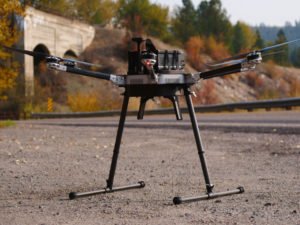 Inspired Flight was launched in late 2016, as an OEM (original equipment manufacturer) components producer and in 2017 made the leap to building its own line of complete drones.
Inspired Flight was launched in late 2016, as an OEM (original equipment manufacturer) components producer and in 2017 made the leap to building its own line of complete drones.
In early 2018, the company released its first commercial drone platform, the IF750 quadcopter, which it continues to build today, albeit with many upgrades in technology.
Most recently, the company introduced what has become its flagship product, the IF1200 hexa-copter, which currently represents about 75% of its sales.
“As we were building our company and gaining traction in the commercial market, some Air Force customers reached out to us in late 2019 to develop a direct (DJI) M600 replacement, with the criteria of more ruggedness, higher reliability, longer flight time and higher lift capacity,” Adam Bilmes, Inspired Flight’s co-founder and director of operations, said in an interview.
The company started delivering the IF1200 to military customers in early 2020 and commercialized the product for the public market later last year.
The IF1200 is a federally compliant heavy-lift UAV platform, which supports payloads of up to 8 kg (about 18 pounds) with flight times up to 40 minutes. The drone’s optical system supports a range of cameras, leveraging complete camera control and the ability to write Global Navigation Satellite System data directly onto an image for photogrammetry and inspection applications.
With its Universal Payload Interface, the IF1200 can integrate with any auxiliary system. It features payload spacing identical to that of the M600, allowing payload integration with minimum downtime. The drone has a signal range of 10 km (about six miles), twice that of the M600.
“Our products are built as OEM platforms that can be tailored to specific requirement of the operator,” Bilmes said. In addition to its government customers in the Interior and Defense departments, the company works on the commercial side with representatives of a number of industries to develop applications for surveying, mapping and geospatial measurement.
Bilmes said from the company’s beginnings, Inspired Flight has focused on producing drones in the US. “That’s one of the key reasons that Inspired Flight has been able to gain a lot of success and traction in the last years,” he said.
“A lot of the other companies, they were using Chinese technology a couple of years ago. Then they tried to quickly shift to being fully American,” he said. “When we were founded in 2016, we made the commitment, even before the policy changes came out. We decided to compete with the big boys from the beginning.”
Skyfish
 Like several other US-based drone manufacturers, Skyfish began its corporate life as a software developer. Focusing on the development of photogrammetry software to turn images and data into 3D models of cell-phone towers, the company evolved to where it began building its own drones to support the buildout of its software platform, CEO Dr. Orest Pilskalns said in an interview.
Like several other US-based drone manufacturers, Skyfish began its corporate life as a software developer. Focusing on the development of photogrammetry software to turn images and data into 3D models of cell-phone towers, the company evolved to where it began building its own drones to support the buildout of its software platform, CEO Dr. Orest Pilskalns said in an interview.
He said the company initially depended on drone platforms that were commercially available at the time, in order to capture the images needed for its precision data collection. “We quickly found out that we couldn’t control the sensor with the capacities that we wanted, the gimbal that worked the way we wanted,” he said. “Even the drone itself, the payload wasn’t right for the camera we wanted to carry.”
Instead Skyfish started building out a drone platform according to its own specifications. “Now we’ve got everything. We’ve built out the drone. We’ve had the gimbal custom made for us. We made the controller in-house, and the batteries,” Pilskalns said. “We ended up slowly building out a hardware company where we were primarily a software company.”
The six-propeller Skyfish M6 drone features a foldable carbon-polymer construction with six motors. Powered by long-lasting lithium-ion batteries, the UAV is capable of reaching a top speed of 65 mph and carrying a 12-pound payload for 30 minutes, with a top flight time of up to 60 minutes.
The M6 offers multiple flight modes, allowing for autonomous or manual operations. The drone is specialized for industrial applications the require heavy payloads, including electro-optical, thermal and robotic equipment. It supports the Sony Alpha series of cameras for up to 61 megapixels of image-capture, as well as supports thermal and LiDAR capability.
“It’s basically a ruggedized tool that you take out and scan stuff with,” Pilskalns said. Fully loaded, the UAV approaches the $30,000 price point, about the same price level as a similarly equipped DJI drone, he said.
Skyfish prides itself on being all-U.S. company. “Every employee is U.S. All the software was built in the U.S.,” Pilskalns said. The only things on a Skyfish drone that is not U.S.-made are the motors and props, which are Chinese-built. “That’s OK. Nobody else is building them that I know of,” Pilskalns said, adding that the company hopes to one day find a non-Chinese source for even these components.
Hitec Commercial Solutions
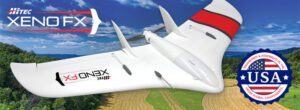 Unlike many U.S.-based drone manufacturers, which have sprung up in the last decade or so, San Diego-based Hitec Commercial Solutions has been around for almost half a century. Founded in 1973, Hitec grew up around the remote-control aircraft industry, selling servos and transmitters for RC airplanes.
Unlike many U.S.-based drone manufacturers, which have sprung up in the last decade or so, San Diego-based Hitec Commercial Solutions has been around for almost half a century. Founded in 1973, Hitec grew up around the remote-control aircraft industry, selling servos and transmitters for RC airplanes.
With the rapid growth of the commercial drone market in the last five or six years, “We transitioned into selling drones as well offering actuators for the commercial industry,” Hitec’s drone sales manager Justin Cunningham said in an interview.
Hitec offers two flagship drone products Xeno FX, a fixed-wing aircraft used for mapping and agricultural applications and the multi-rotor Endurance.
The Xeno has the capability of up to an hour of fully autonomous flight. Its fixed-wing design allows for efficient cruise and maximum time aloft. The aircraft’s quick-change modular payload system lets the operator reconfigure image preprocessing and data-acquisition hardware for multiple missions. The aircraft comes equipped with a Sentera multispectral double 4K Sensor, with additional sensors available to add on. The base price for the model is just under $8,000.
“It’s an extremely versatile platform that’s used for surveying, inspection and mapping,” Cunningham said.
While the company did not specifically set out to produce manufactured-in-U.S.A. drones, the push, led by the federal government to create a market for drones manufactured by non-Chinese companies has worked out to Hitec’s benefit.
“We do have customers that are federal customers. We’ve also got commercial surveyors,” Cunningham said. “We do have approval to fly our aircraft over federal land.”
The Xeno FX is engineered and built in the United States, largely with components that are manufactured in the U.S. or in U.S.-allied nations. Any component that transmits or receives data “are U.S. or U.S.-friendly components,” Cunningham said. Hitec sources some of these data-sensitive components from Canada, South Korea, and other countries that have been deemed as safe sources by the federal government.
The key to the company’s business strategy is the fact that Hitec’s products are engineered and manufactured in-house, Cunningham said. “We have a very close relationship with all of our customers,” he said. “Whereas with larger companies, they sell you the aircraft, then they kick you to the curb; and if you need help, good luck.”

Miriam McNabb is the Editor-in-Chief of DRONELIFE and CEO of JobForDrones, a professional drone services marketplace, and a fascinated observer of the emerging drone industry and the regulatory environment for drones. Miriam has penned over 3,000 articles focused on the commercial drone space and is an international speaker and recognized figure in the industry. Miriam has a degree from the University of Chicago and over 20 years of experience in high tech sales and marketing for new technologies.
For drone industry consulting or writing, Email Miriam.
TWITTER:@spaldingbarker
Subscribe to DroneLife here.

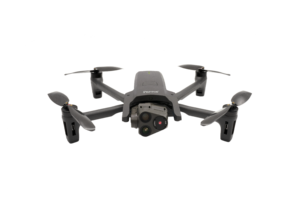
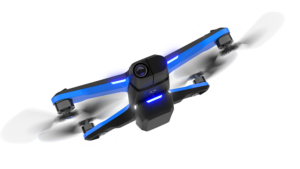
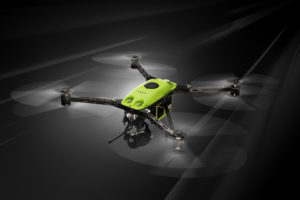
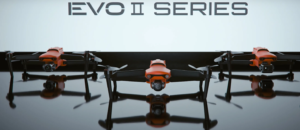






[…] Dronelife […]